5 Graptosedum Varieties: Identification and Care Guide
Imagine a plant that combines the best features of two different succulent genera – that’s exactly what Graptosedum varieties are! Graptosedum succulents are interspecific hybrids between Graptopetalum and Sedum of the Crassulaceae family. At first glance, these two genera don’t seem to belong together, but their hybrids are gorgeous. With thick leaves, dramatic colors and long stems, it’s hard not to adore these special plants. In some nurseries, this plant is referred to as x Graptosedum. Its ‘x’ name indicates it is a hybrid plant.
Related Post:
1,000 Types Of Succulents [With Pictures]
Contents
5 Graptosedum Types You Need in Your Life
Graptosedum ‘Alpenglow’
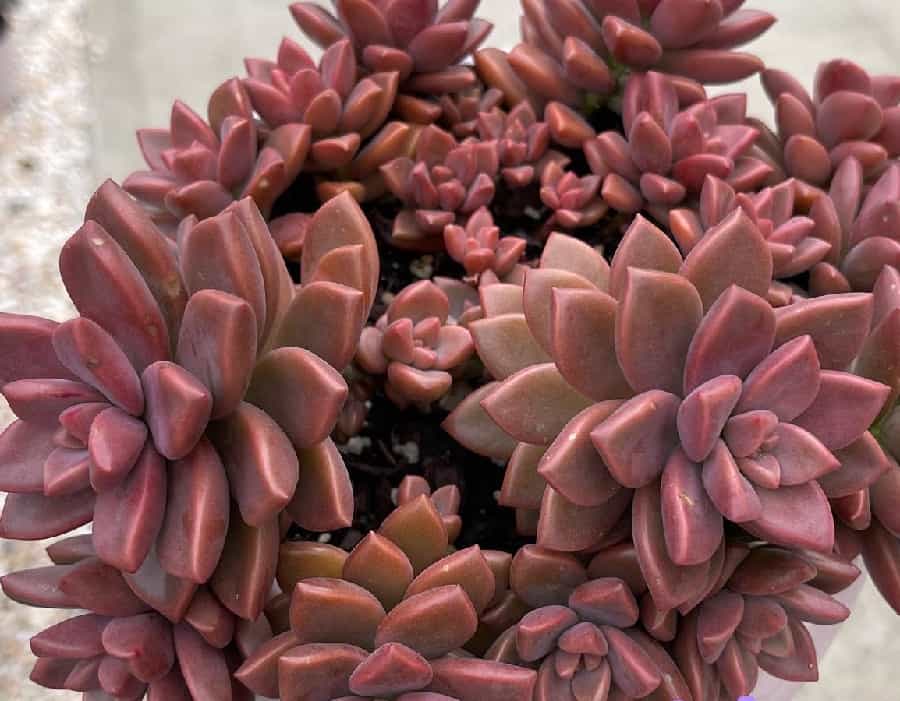
Graptosedum Alpenglow, likely a hybrid of Graptopetalum paraguayense x Sedum stahlii, is also known as Graptosedum Bronze or Graptosedum Vera Higgins. It has brilliant pink leaves, shading from light rose to deep coral.
The stems can grow long and start to bend and trail, with leaves growing on the full length of the stems. It is a strong grower that can eventually form thick clusters in a range of sunset tones.
Graptosedum ‘Blue Giant’
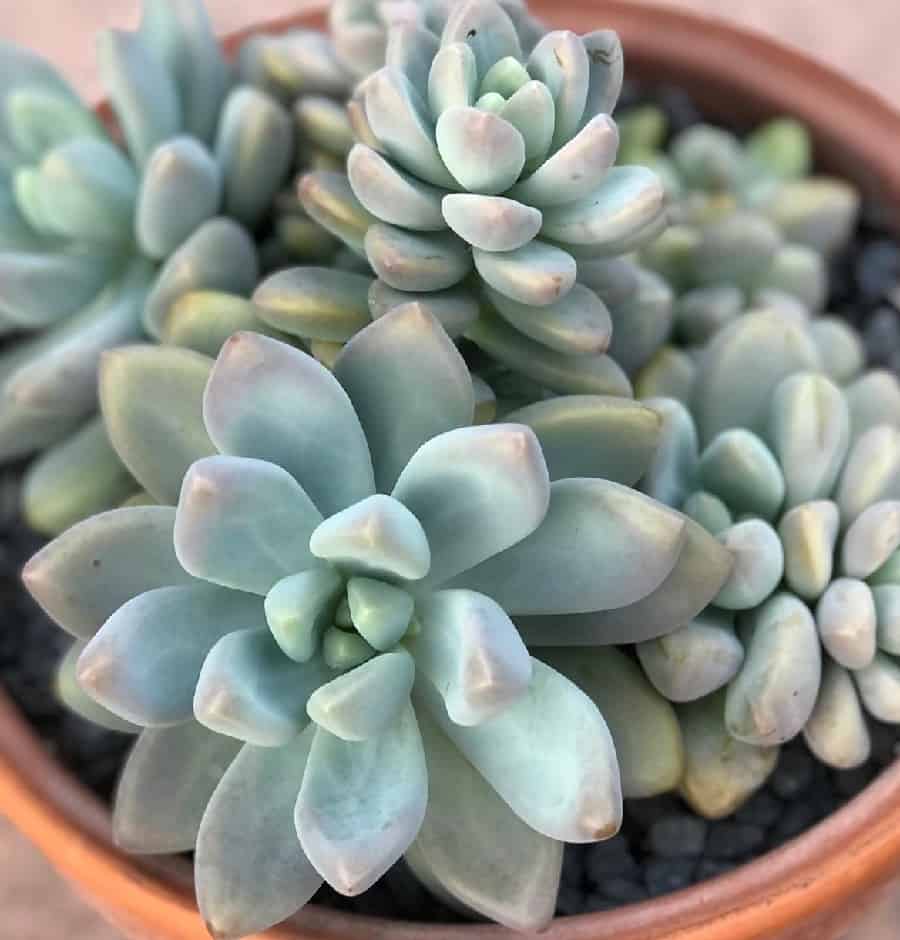
Graptosedum Blue Giant is an intergeneric hybrid resulting from the supposed cross between Graptopetalum amethystinum and Sedum treleasei with a striking blue tone. It grows long, thick stems that bend and sprawl as they develop.
Exposure to the bright sun can cause a peachy blush at the leaf tips. The foliage has a powdery coating of epicuticular wax (farina). It can send up a tall bloom stalk of numerous tiny, yellow flowers.
Graptosedum ‘California Sunset’
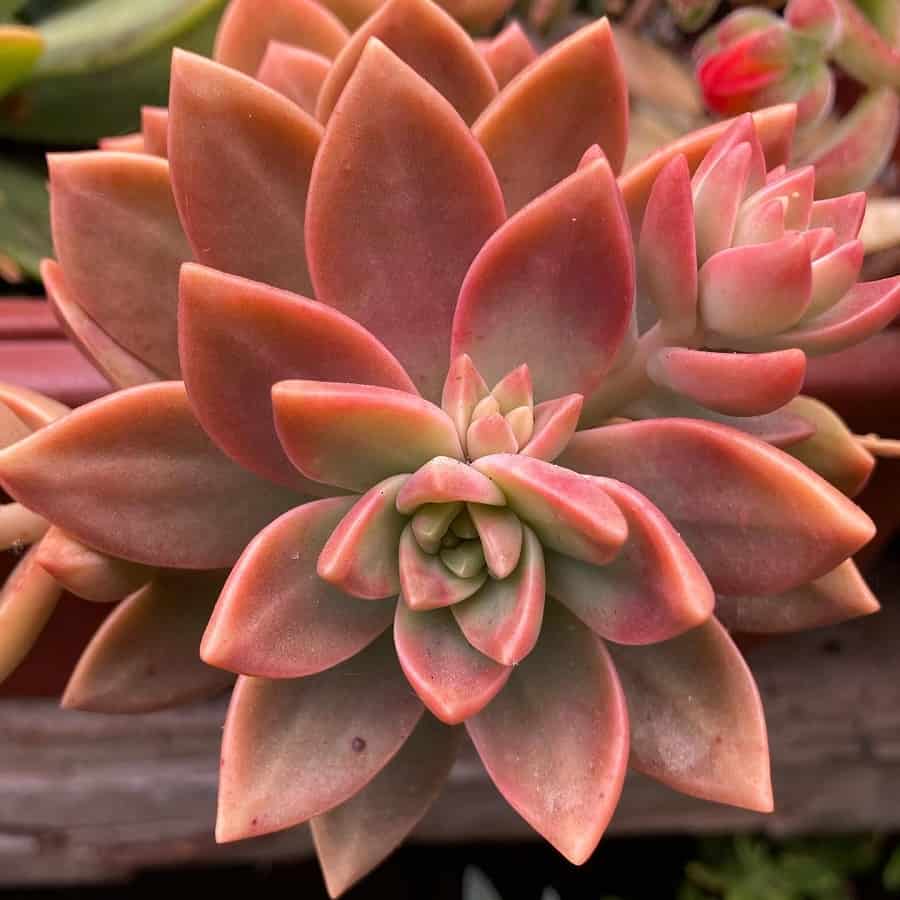
Graptosedum California Sunset is a cross of Graptopetalum paraguayense x Sedum adolphii and is also known as Graptosedum Peach Blossom. It features a stemmed rosette with a pastel green center and peachy pink leaf tips.
Its pink coloration is most vibrant under slight stress from bright sunlight, infrequent watering, or cool temperatures around 50°F (10°C). Look for clusters of white, star-shaped blossoms in the spring.
Graptosedum ‘Francesco Baldi’
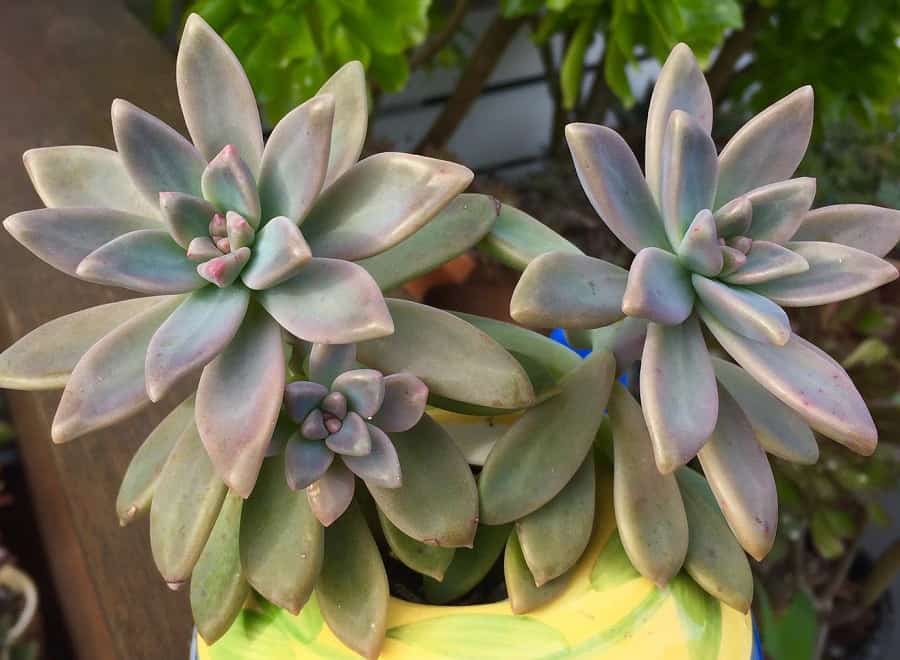
Graptosedum Francesco Baldi is a beautiful interspecific hybrid between two different Mexican species in the Crassulaceae family: Graptopetalum paraguayense and Sedum pachyphyllum. It inherited the pink coloration of the first and the leaf shape from the Sedum.
It is a heavy bloomer, the yellow flowers are numerous and produced more readily than in many other species. Like many succulents, colors change in seasons.
Graptosedum ‘Ghosty’
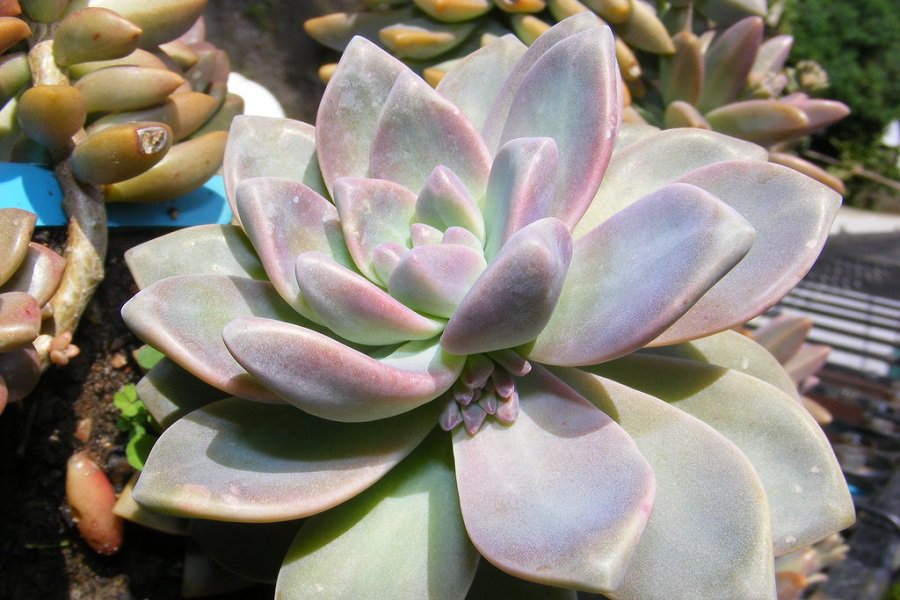
Graptosedum Ghosty is a succulent that has a distinct appearance due to its red leaves. The rosettes grow from the base and have a bunch of leaves that grow upward. These leaves are faded green in color. The leaves are thick and wide in between, with a tip at the top.
How To Care For Graptosedum Succulents
Light
Graptosedum loves lots of bright, direct light – aim for at least 4-5 hours per day. Outdoor summer sun is perfect! Too little light leads to stretching and no flowers. However, be careful of intense afternoon sun, which can scorch the leaves.
If growing indoors, place your Graptosedum near a sunny, unobstructed window. A bright southern or western exposure works best. During winter when sunlight is limited, supplement with a grow light positioned 6-12 inches above the plant. Look for a full-spectrum LED grow light and keep it on for 12-14 hours per day.
Too little light will cause your Graptosedum to etiolate, meaning it will stretch out with faded colors and sparse leaves as it reaches for more light. Adequate bright light is key for keeping these stunners compact, vibrant and able to bloom.
Water
Like most succulents, Graptosedum prefers infrequent but deep watering. Allow the soil to fully dry between waterings, then soak thoroughly until water drains from the bottom. In spring and summer, you’ll need to water more frequently – every 7-10 days. Cut back to every 2-3 weeks in winter when growth slows. Overwatering invites rot.
Soil
Use a well-draining cactus/succulent mix and containers with drainage holes. Constantly damp soil is a no-go for these low-moisture lovers. A gritty mix of potting soil, perlite or pumice, and coarse sand works great.
Temperature
Warm and dry is the way to go! Ideal temperatures range from 65-80°F (18-27°C) in spring/summer and a few degrees cooler in winter around 60-65°F (15-18°C). Outdoor summers of at least 66-68°F (19-20°C) are perfect.
Fertilizing
During the growing season, fertilize monthly with a balanced, water-soluble fertilizer diluted to 1/4 strength. Too much fertilizer can cause fertilizer burn.
Potting and Repotting
When potting up your Graptosedum, choose a container with excellent drainage holes to prevent soggy soil. Terra cotta and unglazed ceramic are great options as they allow the soil to breathe.
Pick a pot that’s only slightly larger than the rootball – succulents don’t mind being a bit rootbound. Having too much excess soil can raise humidity levels and lead to rot.
Use a well-draining cactus/succulent soil mix and don’t compact it too firmly. Top dress with an extra layer of perlite, pumice or chicken grit for added drainage.
Only repot established plants every 2-3 years in the spring. Graptosedums can stay quite rootbound until the potting mix begins breaking down. When repotting, knock off only the loose, outer soil and minimally disturb the rootball.
Pests and Diseases
While generally robust, Graptosedums can potentially fall victim to common houseplant pests like mealybugs, scale insects and spider mites. Check plants regularly and initiate treatment at the first sign of infestation.
Good airflow, proper watering, and quarantining new plants can help prevent most pest issues. If needed, use an insecticidal soap, neem oil or other remedies labeled for use on succulents.
The biggest threat is environmental fungal diseases and rot caused by excess moisture, humidity or poor drainage. Ensure you’re using a fast-draining soil mix and not overwatering. Remove any dead or rotting plant material promptly.
Propagating Graptosedum (Step-by-Step)
One of the best parts about Graptosedum varieties? Propagating new plants is super easy! You can expand your collection from just a few leaves or stem cuttings.
Leaf Propagation
- Gently twist off a few plump, healthy leaves from the mother plant’s stem.
- Allow leaves to dry for 2-3 days until the ends callous over.
- Fill a tray or pot with well-draining soil and firm the leaves into the soil, calloused side down.
- Lightly mist the soil to settle the leaves and place in bright, indirect light.
- In a few weeks, roots and new leaves will sprout! Once established, treat like a mature plant.
Stem Cutting Propagation
- Using clean shears, snip off a 3-4 inch stem piece just below a leaf node.
- Allow the cutting to dry for 2-3 days until the cut end callouses.
- Fill a pot with cactus/succulent soil and make a hole for the calloused end.
- Stick the cutting in and gently firm the soil around the base.
- Place in bright, indirect light and water sparingly once roots appear in 2-3 weeks.
Whether from leaves or cuttings, Graptosedum propagation is easy and rewarding. In no time, you’ll have an abundant collection of these stunning hybrids!
With their dramatic colors, trailing habit, and ease of care, it’s easy to see why these captivating Graptosedum types are such a hit!
